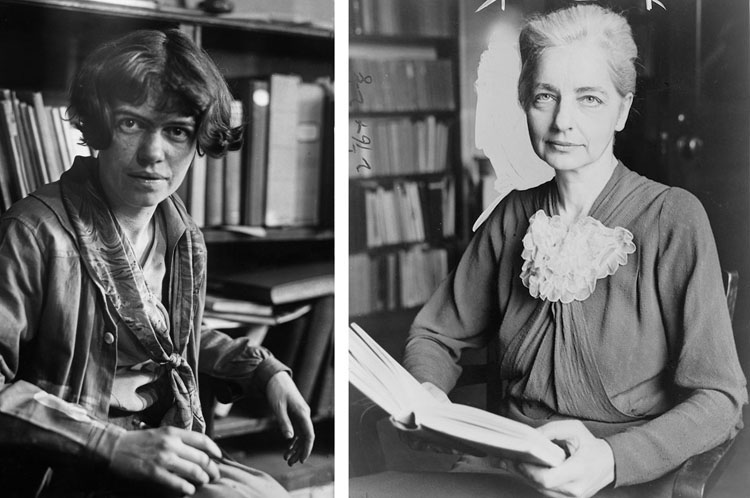To remember this or that historical era, it is convenient to mark its beginning with a particular year, even though the year may be somewhat arbitrary. For instance, we usually mark the beginning of the Protestant Reformation with the year 1517, the year in which Martin Luther nailed his Ninety-Five Theses to the church door at Wittenberg. The year 1542 is a good date to mark the beginning of the modern scientific revolution, the year Nicholas Copernicus published his heliocentric theory. Or we might mark the end of the ancient world and beginning of the medieval world with the year AD 529, the year when, in the East, the Emperor Justinian closed the philosophical schools of Athens and, in the West, St. Benedict founded his monastery at Monte Casino.
Thus, it is convenient to mark the beginning of the American sexual revolution in 1961, the year the FDA gave its approval to the first birth-control pill. Leon Trotsky used to speak of “permanent revolution.” What we have had in America is a kind of permanent sexual revolution; for the champions of sexual freedom, after nearly sixty years, have not yet tired either of blazing new frontiers or of consolidating old conquests.
In the latter category fall current attempts in a number of states by the friends of abortion (may we call them “aborto-philes”?) to put a virtually unlimited right to abortion into state law – an attempt that had its first resounding success recently in New York State, where it was signed into law by the state’s Catholic governor, Andrew Cuomo. Andrew’s father, we remember, once traveled to Notre Dame to explain, in a famous speech of astounding sophistry, why it was perfectly fine for a Catholic politician to support the right to abortion.
These aborto-philes fear that the U.S. Supreme Court – which, they tell us, is now “far-right” thanks to the man who was illicitly put into the White House by a conspiracy of Russian tyrants and American deplorables – might one of these days read the Constitution as it was actually written, and as a result of this literal reading announce that a right to abortion simply isn’t there. (As we all know, it is Hitler-like to read the Constitution as it was written. The best people tell us that the proper way to read it is as it should have been written.)
The sexual revolution has been part of a much more comprehensive revolution; indeed it was the spearhead of that broader revolution. And what was that broader revolution? It was (and still is) the rejection of the ancient idea that moral values are somehow based on God, either the will of God or the reason of God or both.
In the ancient world, the Greek sophists (5thcentury B.C.) rejected this idea, saying that the rules of morality are social creations, not creations of the gods. And that explains why they are one thing in Athens, another in Sparta, yet another in Persia, and still another in Egypt. In the 20thcentury the cultural-relativist school of anthropology, whose two most famous representatives were Ruth Benedict and Margaret Mead, reiterated the sophist doctrine that moral rules and moral values are social creations.

In the decades after World War II, this cultural-relativist theory – the theory that moral rules are man-made, not God-made – became widely popular for at least two reasons:
(1) Because many college professors of anthropology or sociology assigned books by Benedict (Patterns of Culture) and Mead (Coming of Age in Samoa) as required reading. And why wouldn’t they? The books are both fascinating and easy-to-read: ideal for college freshmen and sophomores.
(2) Because the theory allowed young people to justify sexual freedom. It was one thing if God tells you not to go to bed with your boyfriend or girlfriend. It was quite something else if society tells you not to do that. For what right does society have to tell me what to do in the privacy of a bedroom?
Many people took, and are still taking, a rather more radical view. Instead of limiting themselves to saying that society has a right to make and re-make moral values, they say that the individual has such a right. Something is right for me if I think it is right, and it is wrong for me if I think it is wrong. I am an autonomous being. I may call it conscience or I may call it whim, but either way I am the supreme lawgiver for myself.
A sine qua non for the sexual revolution, then, was the premise that the rules of morality, having been made by humans (not by God), can be changed by humans when we think we have a better idea than our ancestors had – or than we ourselves had yesterday. Given this premise, the door was open not just to boys and girls sleeping together but to pornography, abortion, unmarried motherhood, homosexuality, and a greatly increased tolerance for adultery and divorce.
All these changes were applauded, and still are applauded every day, by persons who think of themselves as “liberal” or “progressive.” These people don’t seem to be aware that people who are decidedly un-liberal and un-progressive can also embrace the theory that morality is a purely man-made thing.
For instance, the man who beats up his girlfriend can say that he is simply exercising his “autonomous” right to make a temporary modification to society’s rule against hitting girlfriends. And the racist too can utilize the sophist theory to justify his racism. And so can the anti-Semite, whether his Jew-hatred is the old-fashioned “rightist” kind that leads to a synagogue shooting in Pittsburgh or the more up-to-date “leftist” kind that masquerades as anti-Zionism.
If there is an upsurge of racism and anti-Semitism in today’s world (and there is), it is worth remembering, I suggest, that this – and so much else we now see – has a kinship with the revolution behind the sexual revolution.














